Developing as an Effective Psychologist : Skills and Competencies
- Books Name
- Psychology Book Class-12
- Publication
- PathSet Publications
- Course
- CBSE Class 12
- Subject
- Psychology
Developing as an Effective Psychologist : Skills and Competencies
- In psychology, a client may refer to an individual/group/organisation who on her/his own seeks help, guidance or intervention from a psychologist with respect to any problem faced by her/him.
- ‘Skill’ is defined as proficiency, facility or dexterity that is acquired or developed through training and experience. The Webster dictionary defines it as “possession of the qualities required to do something or get something done”.
- American Psychological Association (1973) identified the following skills essential for professional psychologists:
- Assessment of individual differences
- Behaviour modification skills
- Counselling and guidance skills
- Following can form the basis of differentiating between a pseudo psychologist and a real psychologist:
- Professional training
- Educational background
- Institutional Affiliation
- Experience in providing service
- Training as a researcher
- Internalisation of certain professional values
- Knowledge of tools used by psychologists, their methods and theories
- Some psychologists carry out research to propound or investigate theoretical formulations while others are concerned with our daily life activities and behaviour.
- The basic skills or competencies which psychologists have identified for becoming an effective psychologist fall into three broad sections:

Observational Skills
- Books Name
- Psychology Book Class-12
- Publication
- PathSet Publications
- Course
- CBSE Class 12
- Subject
- Psychology
Observational Skills
- A great deal of what psychologists as researchers and practitioners do in the field is to pay attention, watch and listen carefully.
- They use all the senses, noticing what is seen, heard, smelt, tasted, or touched.
- A psychologist, thus, is like an instrument that absorbs all sources of information from the environment.
- A psychologist engages in observing various facets of surroundings including people and varying events.
- A psychologist may begin with carefully scrutinising the physical setting in order to capture its “atmosphere”. S/he might look at:
- the colour of the floor/ceiling
- the size of the window/doors
- the type of lighting
- artefacts/paintings/sculptures, etc.
- These small, subtle, and irrelevant looking signals influence human behaviour, which is why a psychologist notes such signals in the surroundings.
- A psychologist actively engages in observing people and their actions. This may include:
- the demographic features (age, gender, stature, race, etc.)
- ways of dealing and relating with others
- pattern of behaviours in the presence of others, etc.
- A psychologist records such details because something of significance may be revealed in the process of observation.
- The following points are taken into consideration while making an observation:
- Observe patiently
- Pay close attention to your physical surroundings - who, what, when, where, and how
- Be aware of people’s reactions, emotions, and motivations
- Ask questions that can be answered while observing
- Be yourself, give information about yourself, if asked
- Observe with an optimistic curiosity
- Be ethical, you have to respect privacy, norms of people you are observing; take care not to disclose any information to anyone.
- Two Major Approaches to Observation
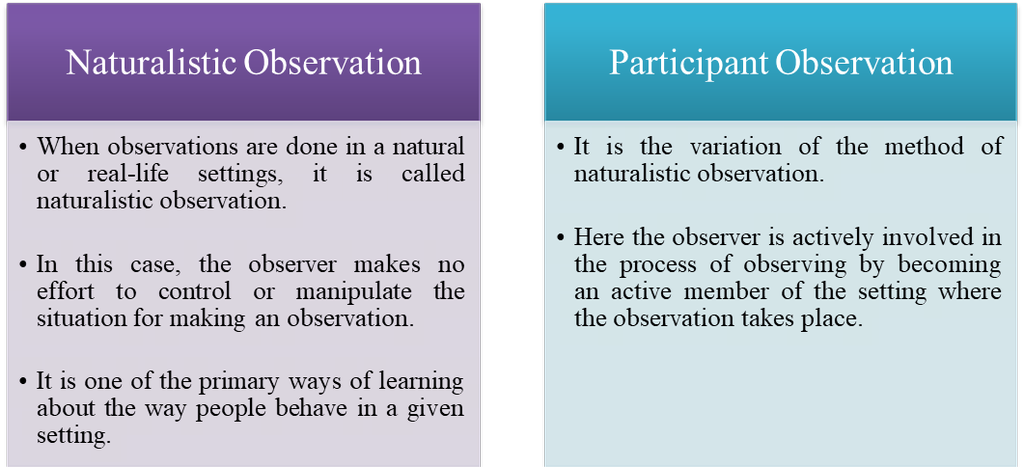
Advantages of Observation
- It allows behaviour to be seen and studied in its natural setting.
- People from outside, or those already working in a setting, can be trained to use it.
- Disadvantages of Observation
- Events being observed are subject to bias due to the feelings of the people involved as well as of the observers.
- Generally day-to-day activities in a given setting are fairly routine, which can go unnoticed by the observer.
- Another potential pitfall is that the actual behaviour and responses of others may get influenced by the presence of the observer, thus, defeating the very purpose of observation.
General Skills
- Books Name
- Psychology Book Class-12
- Publication
- PathSet Publications
- Course
- CBSE Class 12
- Subject
- Psychology
General Skills
- These skills are generic in nature and are needed by all psychologists irrespective of their field of specialisation.
- These skills are essential for all professional psychologists, whether they are working in the field of clinical and health psychology, industrial/ organisational, social, educational, or in environmental settings, or are acting as consultants.
Intellectual and Personal Skills
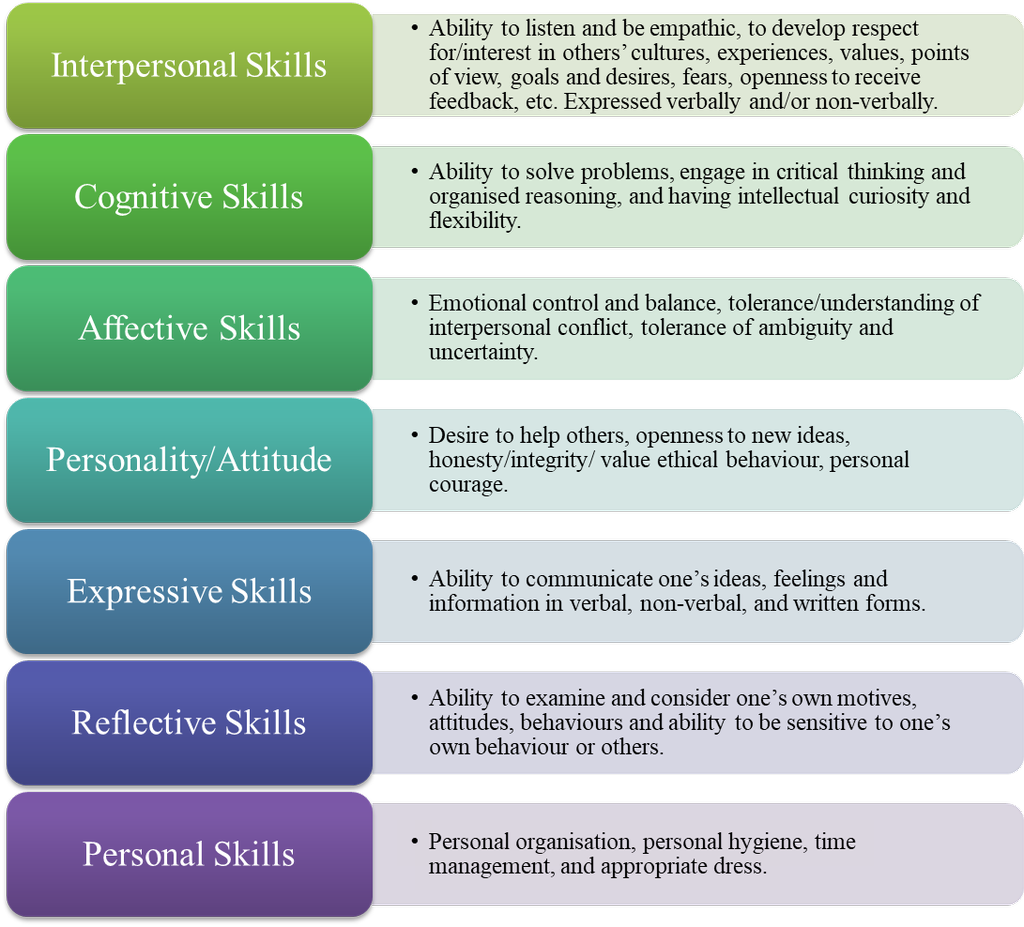
Sensitivity to Diversity : Individual and Cultural Differences
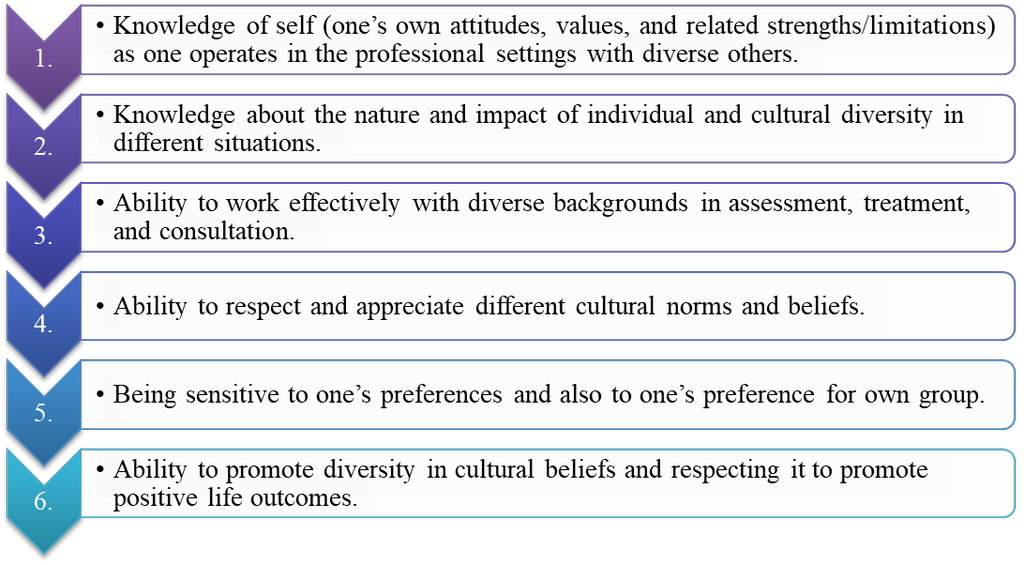
- It is expected that it will not be proper to provide any form of professional training (in clinical or organisational fields) to students who do not possess these skills.
- Once a student has these skills, subsequent training in her/his area of specialisation would only refine and further hone these skills required by a professional within her/his field of specialisation.
Specific Skills
- Books Name
- Psychology Book Class-12
- Publication
- PathSet Publications
- Course
- CBSE Class 12
- Subject
- Psychology
Specific Skills
- These skills are core/basic to the field of psychological service. For example,
a) Psychologists working in clinical settings need to be trained in various techniques of:
- Therapeutic interventions
- Psychological assessment
- Counselling
b) Organisational psychologists working in the organisational context need to have:
- Assessment skills
- Facilitation and consultation skills
- Behavioural skills to bring about individual, group, team and organisational development
- Research skills
- Though, specific skills and competencies are required for a very specialised professional functioning, nonetheless, all skill sets do overlap quite a bit. They are not exclusive to an area.
- Relevant specific skills and competencies can be classified as follows:
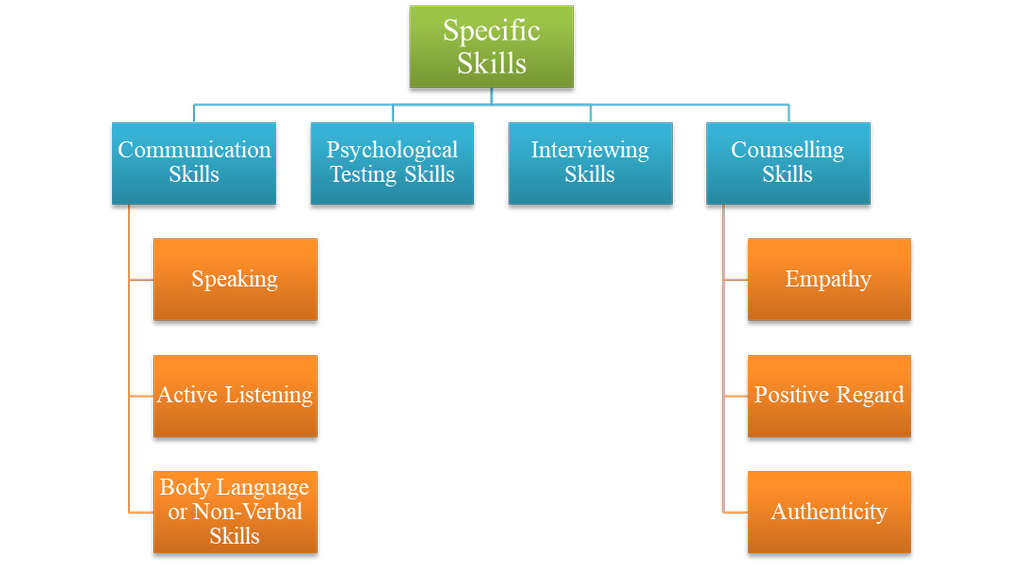
Communication Skills
- It plays an important role in fostering relationships and personal effectiveness.
- Being an effective communicator is one of the most important skills one needs to succeed in life.
- Definition of Communication:
Communication is a conscious or unconscious, intentional or unintentional process in which feelings and ideas are expressed as verbal and/or non-verbal messages that are sent, received, and comprehended.
Characteristics of Communication
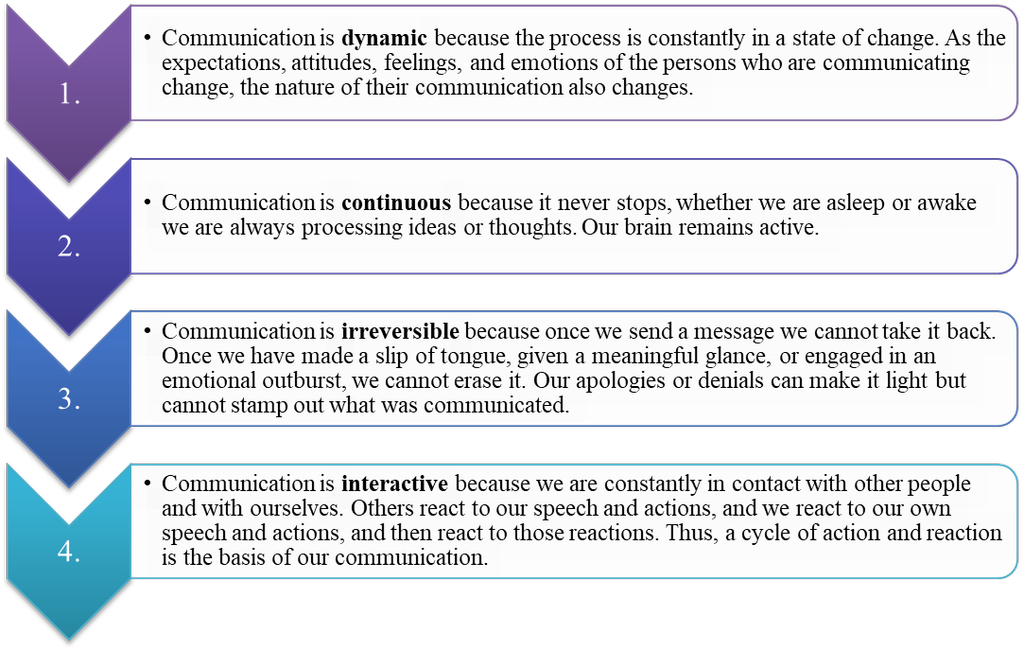
The process of communication can be:
- Accidental (having no intent)
- Expressive (resulting from the emotional state of the person)
- Rhetorical (resulting from the specific goal of the communicator)
Human communication occurs on the following levels:
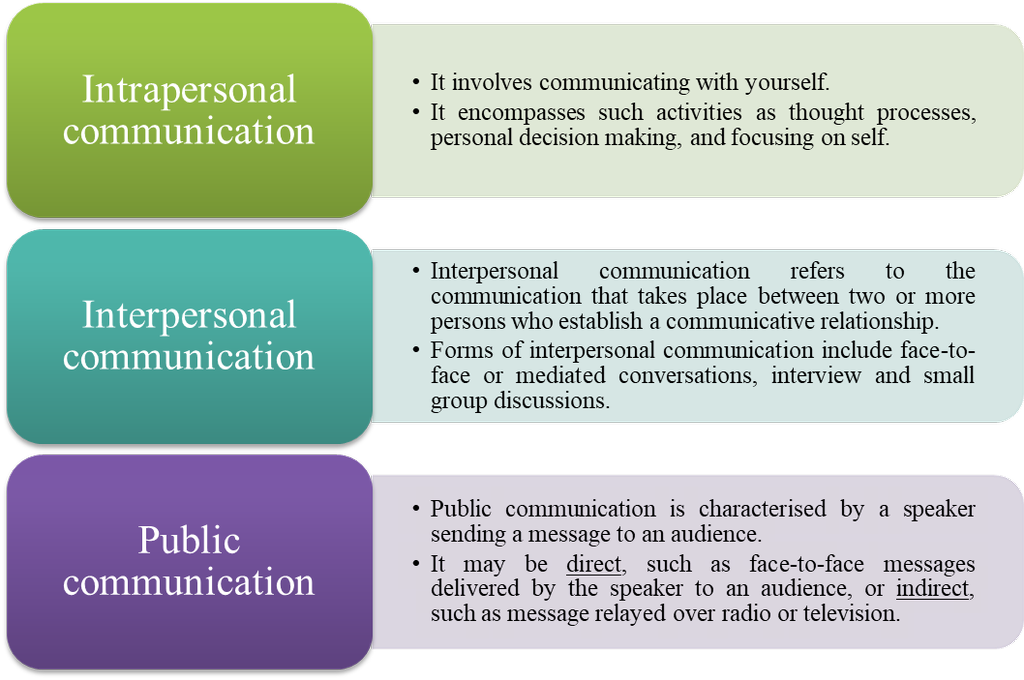
Components of Human Communication
- When we communicate, we communicate selectively, i.e. from the wide range of repertory of words, actions, etc. available to us, we choose that which we believe is best suited for the idea we wish to express.
- When we communicate,
- We encode (i.e., take ideas, give them meaning and put them into message forms) and,
- Send the idea through a channel which is composed of our primary signal system based on our senses (i.e., seeing, hearing, tasting, smelling, and touching).
- The message is sent to someone who receives it using her or his primary signal system.
- She/he decodes (i.e., translates message into understandable forms).
Two major kinds of Communication
- Verbal Communication
For example, one may say that he/she heard a bell or an object feels soft.
These are examples of verbal communication which express how you understand the signals your senses have received.
- Non-Verbal Communication
For example, one touches a hot stove, his/her fingers pull away quickly, and your eyes well up with tears. The pulling away of fingers and welling up of eyes with tears will communicate to an onlooker the pain suffered by the person.
- The following model shows the process of communication involving different stages:
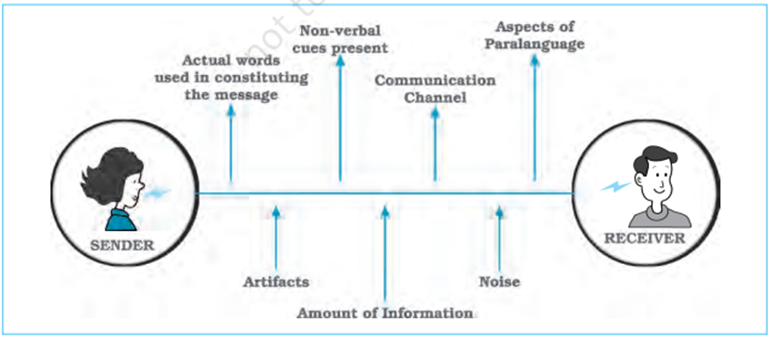
Following influence the communication process:
- Actual words used in constituting the message
- Non-verbal cues present
- Communication channel
- Aspects of Paralanguage
- Artifacts
- Amount of information
- Noise
- The degree to which the communication is effective depends on the communicators’ mutual understanding of the signals or codes being used in transmitting a message and in receiving.
- Difference between Speech and Communication
- Speech is only a biological act; the utterance of sound, possibly the use of language.
- Communication is broader; it involves a relationship among two or more people in which they attempt to share meaning so that the intent of message received is the same as the intent of the message sent.
Speaking
- One of the most important components of communication is speaking with the use of language.
- Language involves use of symbols which package meaning within them.
- To be effective, a communicator must know how to use language appropriately, because language is symbolic, it is necessary to be as clear and precise as possible when using words.
- Communication takes place within a context. So one needs to consider:
- Other’s frame of reference, i.e., the context used by the sender to say something.
- Whether s/he shares your interpretation, if not, it is important to adjust your vocabulary level and choice of words to fit the level of the listener. Slang expressions, words unique to a culture or region, and euphemism can sometimes become obstacles in good communication.
Listening
- It is an important skill that we use daily.
- Academic success, employment achievement, and personal happiness, to a large extent, depend upon one’s ability to listen effectively.
- At first, listening may appear as a passive behaviour, as it involves silence. But this image of passivity is far from true, as listening requires a person to be:
- Attentive,
- Patient,
- Non-judgmental, and
- Yet have the capacity to analyse and respond.
Difference between Listening and Hearing
- Hearing is a biological activity that involves reception of a message through sensory channels. It is only a part of listening.
- Listening is a process that involves reception, attention, assignment of meaning, and listener’s response to the message presented.
- Reception of a stimulus or message
- The initial step in the listening process
- A message could be auditory and/or visual.
- The hearing process is based on a complex set of physical interactions that take place involving the ear and the brain.
- In addition to using the hearing mechanism, people listen through their visual system. They observe a person’s facial expressions, posture, movement, and appearance, which provide important cues that may not be obvious merely by listening to the verbal part of the message.
- Attention
- Once the stimulus, i.e. the word or visual, or both, is received, it reaches the attention stage of the human processing system.
- In this phase, the other stimuli recede so that we can concentrate on specific words or visual symbols.
- Normally, our attention is divided between:
- what we are attempting to listen to
- what is happening around us
- what is going on in our mind
- Thus, our attention is being pulled in different directions.
- Therefore, divided attention makes it difficult for you to receive signals or messages.
- Assignment of Meaning
- The process of putting the stimulus we have received into some predetermined category develops as we acquire language.
- We develop mental categories for interpreting the message we receive.
- Listener’s Response to the Message Presented
Role of Culture in Listening
- The culture, we have been brought up in, influences our listening & learning abilities.
- For example,
- Asian cultures, such as India, emphasise on listening by being a silent communicator when receiving messages from seniors or elders.
- Some cultures focus on controlling attention.
Buddhism, for instance, has a notion called ‘mindfulness’. This means devoting your complete attention to whatever you are doing.
Training in ‘mindfulness’ which starts in childhood can help to develop longer attention spans and therefore, lead not only to better listening but also to sympathetic listening.
- However, in many cultures, such listening enhancing concepts are not present.
Tips to improve Listening skills
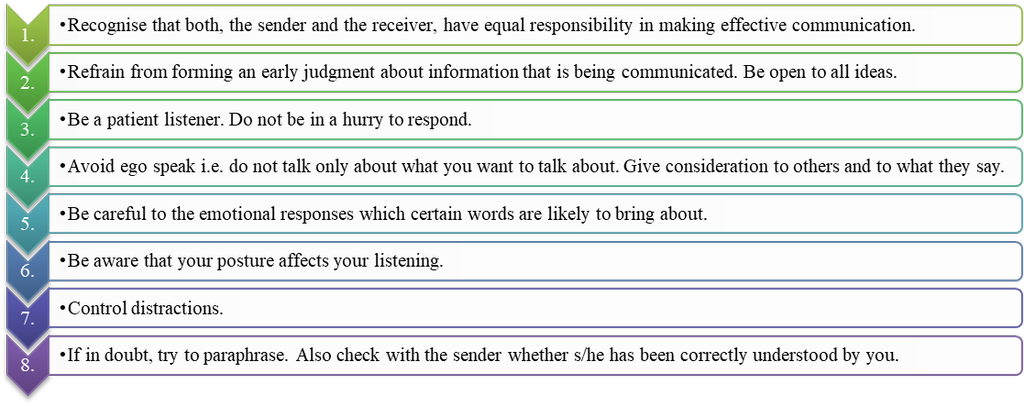
Paraphrasing
- An individual (the receiver) makes a summary of the ideas just received and provides the sender with a restatement of what s/he understands. This is called ‘paraphrasing’.
- The person in doing this does not repeat the exact words said by the sender.
- Paraphrasing allows one to understand how much the other person understood of what was communicated.
- If someone cannot repeat or write down a summary of what was said, then s/he probably did not get the whole message or did not understand it.
Body Language
- When one communicates with another person, his/her words are not enough to communicate the complete meaning of the message.
- It is possible to communicate a great deal even without using verbal language.
- Non-verbal acts are symbolic and closely connected to any talk in progress. Such non-verbal acts are part of what is called ‘body language’.
- Body language is composed of all those messages that people exchange besides words.
- A single non-verbal signal does not carry complete meaning. Factors such as gestures, postures, eye contact, clothing style, and body movement — all of them have to be considered together, that is, in a cluster.
- In verbal communication, non-verbal signs can have many different meanings.
For example, crossing arms over the chest may suggest that a person likes to keep aloof. But, crossed arms accompanied by an erect posture, tightened body muscles, a set clenched jaw, and narrowing of the eyes are likely to communicate anger.
- A person’s background and past patterns of behaviour are also considered when we analyse body language.
- The consistency between current and past patterns of behaviour, as well as harmony between verbal and non-verbal communication, is termed as congruency.
- Body language is used to encourage or discourage conversation. For instance, we consciously wave at waiters or friends to catch their attention.
- Much of the use of body language occurs in conversing with others without conscious realisation.
Psychological Testing Skills
These skills are concerned with the knowledge base of the discipline of psychology.
They involve psychological assessment, evaluation and problem solving with individuals and groups, organisation, and the community.
Psychological tests have been devised and are primarily used for:
- the determination and analysis of individual differences in:
- general intelligence
- differential aptitudes
- educational achievement
- vocational fitness
- personality
- social attitudes
- various non-intellectual characteristics
- studying a variety of psychological studies on groups
- making an assessment of a particular individual
Psychologists study these differences based on factors such as occupation, age, gender, education, culture, etc.
An attitude of objectivity, scientific orientation, and standardised interpretation must be kept in mind while using psychological tests.
Psychological assessment is a basic competency required by psychologists.
It includes knowledge of comprehensive and integrated assessment of persons based on interviewing, psychological testing, and evaluation of the outcomes of psychological services.
The skills needed for psychological assessment are:
- Ability to select and implement multiple methods and means of evaluation in ways that are responsive to, and respectful of diverse individuals, couples, families, and groups.
- Ability to utilise systematic approaches to gather data required for taking decisions.
- Knowledge of psychometric issues and bases of assessment methods.
- Knowledge of issues related to integration of different data sources.
- Ability to integrate assessment data from different sources for diagnostic purposes.
- Ability to formulate and apply diagnoses; to understand strengths and limitations of current diagnostic approaches.
- Capacity for effective use of supervision to implement and enhance skills.
The facts required for psychological assessment are as follows:
- Purpose of the test, i.e. what it has to be used for?
- Target population for which it can be used.
- Type of validation done on the test, i.e. on what basis it can be said that it measures what it claims to measure?
- The external criteria of validation, i.e. the areas in which it has been found working.
- The reliability indices, i.e. how much error is possible in scores?
- The standardisation sample i.e. when the test was constructed, who were tested, e.g. Indians or Americans, rural/urban, literate/semi-literate, etc.?
- Time taken in the administration of test.
- Scoring patterns, i.e. what is to be scored and what method is to be used?
- Norms i.e. what kinds are available? What is the appropriate group which is to be used for interpretation of scores, e.g. male/female, age groups, etc.?
- Influence of any special factors, e.g. presence of others, stress situations, etc.
- Limitations of the test, i.e. who, and what it cannot assess? Conditions in which it may not give good assessment.
Interviewing Skills
- Books Name
- Psychology Book Class-12
- Publication
- PathSet Publications
- Course
- CBSE Class 12
- Subject
- Psychology
Interviewing Skills
- An interview is a purposeful conversation between two or more people that follows a basic question and answer format.
- Interviewing is more formal than most other conversations because it has a pre-set purpose and uses a focused structure.
- There are many kinds of interviews. For example, the employment interview, information gathering interview, counselling interview, interrogatory interview, radio-television interview, and research interview.
Interview Format
- Once the objectives of the interview are established, the interviewer prepares an interview format.
- The basic format, regardless of the interview’s purpose, is divided into three stages:
Opening of the Interview
- It involves establishing rapport between two communicators.
- The purpose is to make the interviewee comfortable.
- Generally, the interviewer starts the conversation and does most of the talking at the outset.
- This serves two functions:
- it establishes the goal of interview
- it gives the interviewee time to become comfortable with the situation and the interviewer
Body of the Interview
- It is the heart of the process.
- In this stage, the interviewer asks questions in an attempt to generate information and data that are required for the purpose.
Sequence of Questions
- To accomplish the purpose of an interview, the interviewer prepares a set of questions, also called a schedule, for different domains, or categories s/he wants to cover.
- To do this, the interviewer must first decide on the domains/categories under which information is to be generated.
- These categories and the questions within them are framed ranging from easy-to-answer to difficult-to-answer.
- Questions are also formulated to assess facts as well as subjective assessment.
Closing the Interview
- While closing the interview, the interviewer should summarise what s/he has been able to gather.
- One should end with a discussion of the next step to be taken.
- When the interview is ending, the interviewer should give a chance to the interviewee to ask questions or offer comments.
Types of Interview Questions
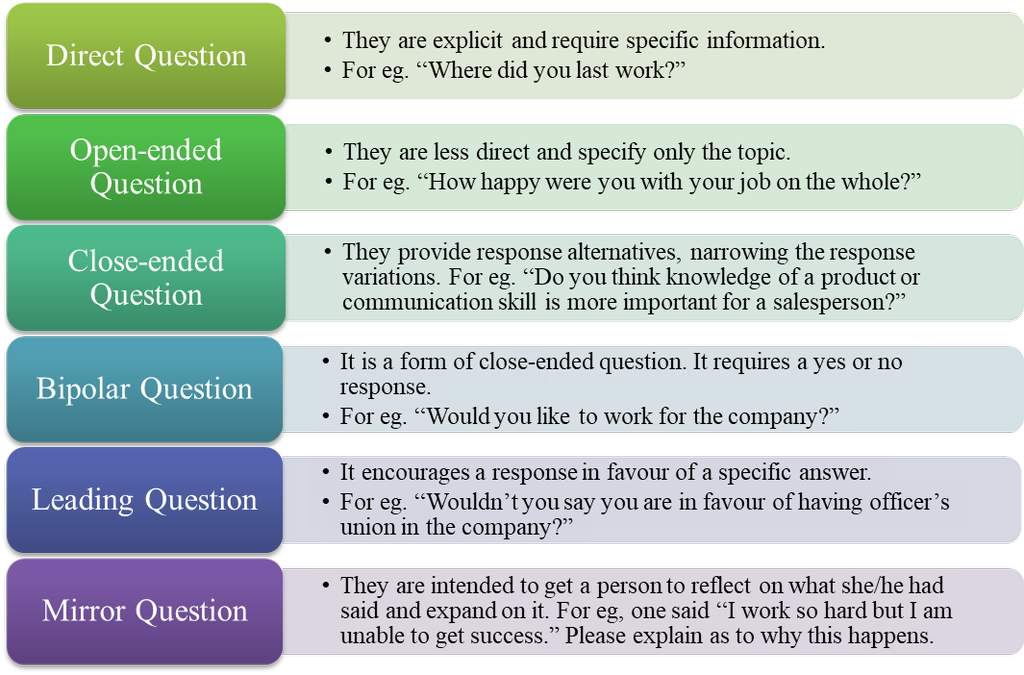
Counselling Skills (Empathy, Positive Regard and Authenticity)
- Books Name
- Psychology Book Class-12
- Publication
- PathSet Publications
- Course
- CBSE Class 12
- Subject
- Psychology
Counselling Skills (Empathy, Positive Regard and Authenticity)
- Counselling is a domain where a person entering the field is required to engage in self-introspection in order to assess her/his inclination and basic skill set for being effective in her/his vocation.
- Counselling provides a system for:
- planning the interview
- analysing the counsellor’s and client’s behaviour
- determining the developmental impact on the client
- A counsellor is most often interested in building an understanding of the clients problem by focusing on what understanding the client has of her/his problem and how s/he feels about it.
- Counselling involves helping relationship, that includes someone seeking help, and someone willing to give help, who is capable of or trained to help in a setting that permits help to be given and received.
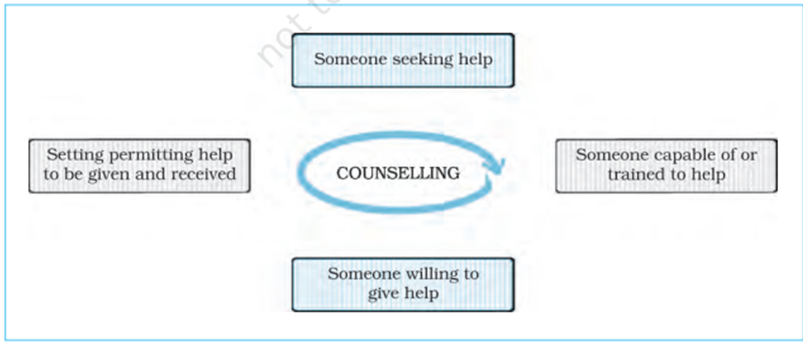
Pre-requisites of Counselling Process - The following elements about counselling are common to the major theoretical approaches to counselling:
- Counselling involves responding to the feelings, thoughts, and actions of the clients.
- Counselling involves a basic acceptance of the client’s perceptions and feelings, without using any evaluative standards.
- Confidentiality and privacy constitute essential ingredients in the counselling setting. Physical facilities that preserve this quality are important.
- Counselling is voluntary. It takes place when a client approaches a counsellor. A counsellor never uses any kind of coercion for obtaining information.
- Counsellors and clients both transmit and receive verbal and non-verbal messages during the process.
Therefore, awareness and sensitivity to the nature of the message is an important prerequisite for a counsellor’s effectiveness.
Breaking the Myths of Counselling
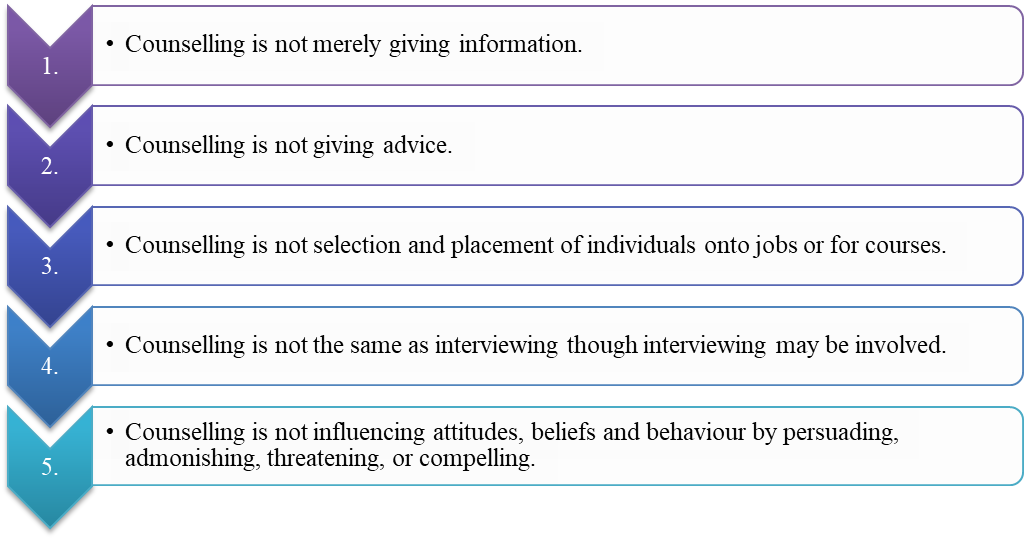
Developing Effective Relationships
- Counselling usually has an all inclusive outcome for the clients.
- Effective behavioural change that takes place in the client is multifaceted.
- It may show up in the form of a client:
- taking greater responsibility
- developing new insight
- learning to engage in different behaviours
- making an effort to develop more effective relationships
Characteristics of Effective Helper
- Being a trained helper, the counsellor has the responsibility for ensuring that her/his client is benefited from counselling and its therapeutic effects are achieved.
- The success of a counselling process depends on the skill, knowledge, attitude, personal qualities and behaviour of a counsellor, any or all of which can enhance or diminish the helping process.
- Four qualities that are associated with effective counsellors are:

- Authenticity
- One’s image or perception of onerself makes up his/her “I”. The self-perceived “I” is revealed through ideas, words, actions, clothing, and your life-style, which communicate one’s “I” to others.
- Those who come into close contact with that person also build their own image of him/her for themselves, and they also sometimes communicate this image to him/her, which develops into a ‘me’. This other perceived ‘me’ is the person that others perceive that person to be. This perception may be the same as or different his/her own self-perception of ‘I’.
- The degree to which he/she is aware of these perceptions of others as well as of his/her own perception of your self indicates that she/he is self-aware.
- Authenticity means that one’s behavioural expressions are consistent with what he/she values and the way he/she feels and relates to his/her inner self-image.
- Positive Regard for Others
- In a client-counsellor relationship, a good relationship allows freedom of expression, which reflects acceptance of the idea that the feelings of both are important.
- Such feelings of uncertainity and anxiety, experienced upon forming a new relationship, get minimised when a counsellor extends a positive regard to the client by accepting that it is all right to feel the way the client is feeling.
- In order to show positive regard to others, the following guidelines may be kept in mind:
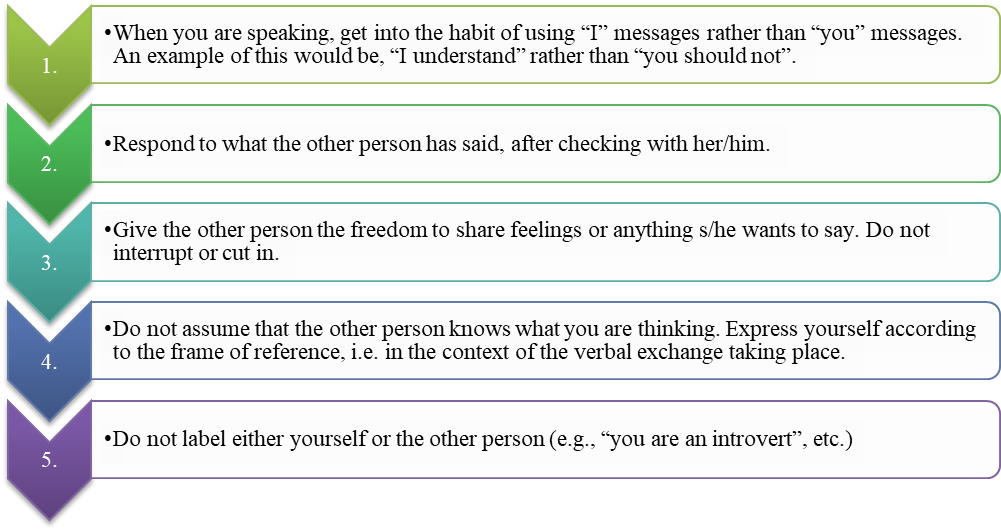
- Empathy
- It is the ability of a counsellor to understand the feelings of another person from her/his perspective.
- It is like stepping into someone else’s shoes and trying to understand the pain and troubled feelings of the other person.
- This is one of the most critical competencies that a counsellor needs to have.
- Paraphrasing
- This involves the ability of a counsellor to reflect on what the client says and feels using different words.
- Paraphrasing allows one to understand how much the other person understood of what was communicated.
Ethics of Counselling
- Counsellors have taken important steps to develop their professional identity — the development and implementation of appropriate ethical standards.
- Awareness of the ethical standards and codes is extremely important, because counselling is a part of the service sector.
- Not following the ethical standards may have legal implications.
- The client-counsellor relationship is built on ethical practice.
- The American Psychological Association (APA) has developed a code of ethical conduct for behaviour and decision-making in actual clinical settings.
- The practical knowledge of these ethical domains can guide the practice of counselling in achieving its desired purpose.
- Some of the APA practice guidelines are:
-
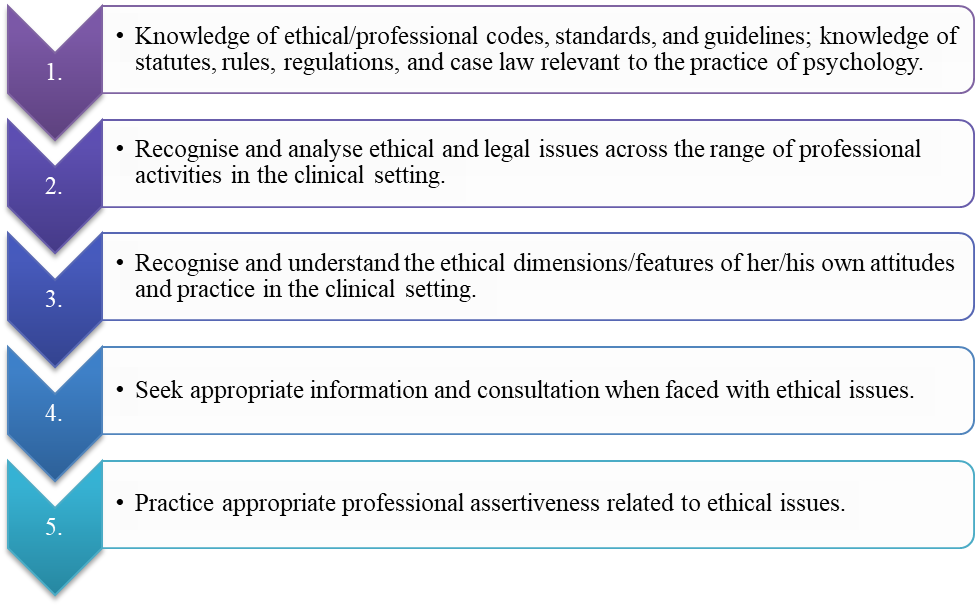

 PathSet Publications
PathSet Publications
